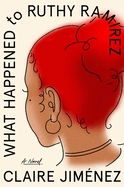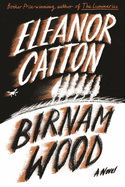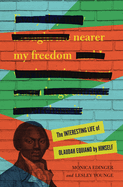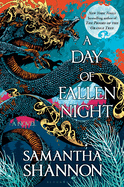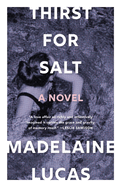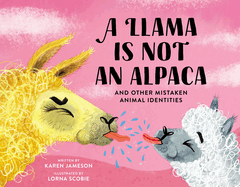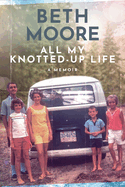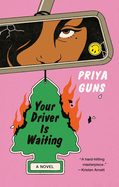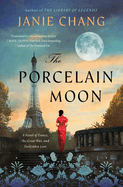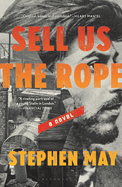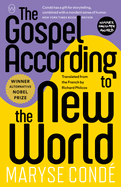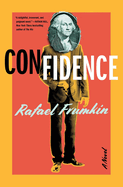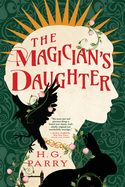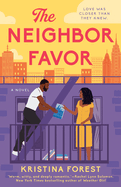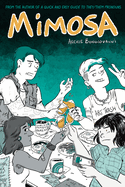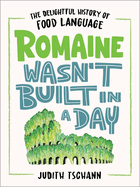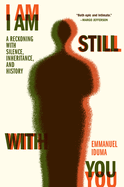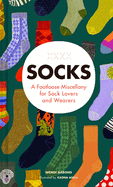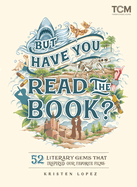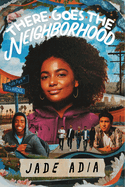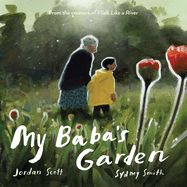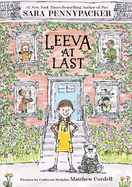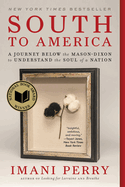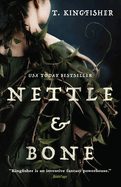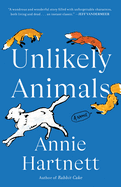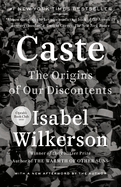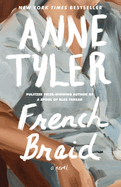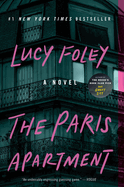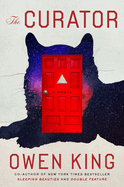Friday, March 10, 2023
There's an embarrassment of riches in fiction by women this week, just in time for Women's History Month: Birnam Wood, Eleanor Catton's "maximally rewarding existential thriller," in which a New Zealand guerrilla gardening collective and the head of an American tech giant become unlikely bedfellows; in What Happened to Ruthy Ramirez, one of Claire Jimenez's greatest achievements "lies in the individual voices of her narrators" after Ruthy does not come home from school one day; Madelaine Lucas's debut novel, Thirst for Salt, an "engrossing drama" that invites readers to share in "the sheer magic of passion ignited and the sweet domesticity that is the reward of everyday love." Plus so many more!
In The Writer's Life, Asale Angel-Ajani talks about her first novel, A Country You Can Leave, as well as why she hid books from her mother, and how she found the book that changed her life.
What Happened to Ruthy Ramirez
by Claire Jimenez
Claire Jimenez's first novel, What Happened to Ruthy Ramirez, brings to life a close but troubled Puerto Rican family in Staten Island, N.Y., carrying on but rocked by loss. "The five of us seem normal for a while, up until Ruthy turns thirteen and disappears.... Draw my mother sixty-two pounds later. Give her diabetes. Kill my dad." No one ever figured out what happened on the day Ruthy didn't come home from track practice on the S48 bus as expected.
More than a decade later, Nina, the baby, is "blessed with the brilliant luck of graduating [from college] into the 2008 recession," the first in her family to attend college but now returned home to live with her mother and work at the mall selling lingerie. Jessica, the eldest, lives with her boyfriend and their baby; she works as a patient care technician at the hospital, harried and tired but proud of her work. Their mother, Dolores, depends on her relationship with God and the church. What Happened to Ruthy Ramirez unfolds in alternating chapters, through the first-person perspectives of these four central characters: Nina, Jessica and Dolores in the late 2000s and the stormy, troubled 13-year-old Ruthy in 1996 when she disappeared. Jessica and Nina wrestle with the complicated love they feel for their family; Dolores rants in a well-meaning but frustrated one-sided conversation with her God; Ruthy oozes teenaged bravado and angst.
Readers will be tugged by hope and despair alongside these true-to-life characters. In the end, What Happened to Ruthy Ramirez offers observations about race, class, family and the fate of missing girls beyond its title character. --Julia Kastner, librarian and blogger at pagesofjulia
Discover: This debut novel about a family still searching for a long-missing daughter and sister brims with voice, attitude and yearning.
Thirst for Salt
by Madelaine Lucas
Recollections of a long-ago romance and the life choices made in its aftermath haunt the narrator of Thirst for Salt by Madelaine Lucas, an Australian-born author and musician living in the U.S. Lucas's debut, set in a picturesque beach town in New South Wales, Australia, deconstructs an intimate love story from the sun-bleached, sand-encrusted remembrances of a woman yearning to make peace with her past. The narrator, now in her late 30s, is an unattached Australian who's teaching writing in New York. While searching online, she discovers a photograph of her former lover Jude and his young child. The photograph dislodges an avalanche of memories of their affair when the narrator was in her 20s and Jude was 18 years her senior. They met one summer while the young woman and her mother vacationed in Jude's hometown, Sailors Beach.
Thirst for Salt derives its lyrical power from the lapping waves of the ocean, wind-rustled trees and abundance of birdsong, which form the chorus of this engrossing drama, inviting readers to share in the sheer magic of passion ignited and the sweet domesticity that is the reward of everyday love. Lucas's writing captures the emotional intensity of the affair: the narrator envies the other lives Jude had already led before they met. When Jude's longtime friend, the beautiful Maeve, appears on the scene and announces she is pregnant with her married lover's child, the dynamics suddenly shift. As the narrator's memories unravel the tendrils of past truths, readers will be irresistibly drawn into the mystery of all that remains unsaid in Lucas's captivating story. --Shahina Piyarali, reviewer
Discover: Set in a coastal town in Australia, this debut novel about a long-ago love affair revels in the lyrical language that describes its rugged landscape and the emotional intensity of new love.
Your Driver Is Waiting
by Priya Guns
Damani Krishanthan, the antihero of Priya Guns's startling, dark social satire Your Driver Is Waiting, struggles to cope in a city fraught with protests over social injustices. Her must-have survival tools in her job as a rideshare driver include a switchblade, a tire iron and pepper spray. She leads a frustrating life: her beloved father is dead, and depression immobilizes her Amma. Her pay rarely covers the bills, making Damani one of the many working poor in a city full of social injustices. Friends and coworkers invite her to protest against the rideshare company's pitiful wages, but taking time off to protest would mean even less income. Forcing herself to endure long hours driving and being nice to the dangerous, misogynistic and uncaring passengers she encounters, all in the hopes of a five-star rating and desperately needed tips, drains her sanity and frays the walls of her thinly veiled temper. Life remains bleak until she falls for a wealthy and woke white socialite named Jolene, who sweeps Damani off her feet with sexual bliss and fantastical promises of extravagant vacations. The relationship comes to a screeching halt when Jolene gets an introduction to Damani's friends. Betrayal and violence erupt over unanswered texts and unreturned phone calls. Damani becomes a stalker as her one possibility of happiness is lost in a fiery crescendo of rage.
Guns catches fire in her first novel, a too-real-not-to-be-real satire that is bound to become a much discussed book of note. It's an insightfully relatable statement on the frustrations of making ends meet in a gig economy. --Paul Dinh-McCrillis, freelance reviewer
Discover: A rideshare driver struggles to hold her life together while navigating a city seething over social injustices in the tense Your Driver Is Waiting.
The Porcelain Moon: A Novel of France, the Great War, and Forbidden Love
by Janie Chang
Janie Chang's compelling fourth novel, The Porcelain Moon, weaves the stories of two young women seeking love and freedom in the final days of World War I. Pauline Deng enjoys working in her uncle's antique shop in Paris with Theo, her cousin, and knows it's a far better life than she could expect as an orphaned daughter in Shanghai. Theo is less enthusiastic about both the business and his arranged marriage. He finds ways to delay the latter, including joining the Chinese Labour Corps as a translator when war breaks out. Stationed in Noyelles-sur-Mer, he meets Camille, a local woman desperate to escape her abusive marriage. When Pauline receives word that her own marriage has been arranged, meaning she will be sent back to Shanghai, she hops a train north to find Theo and ask him to plead her case.
Chang (The Library of Legends; Dragon Springs Road; Three Souls) sheds light on the experiences of thousands of Chinese workers brought to Europe as noncombatant labor during the war. Theo and his colleagues occupy an odd in-between place in both the army and the villages where they are stationed. Pauline not only meets Camille and other locals when she arrives in Noyelles-sur-Mer, but she also stumbles onto a potentially dangerous ring of black marketeers. As the war grinds toward its end, both Camille and Pauline undertake desperate actions to preserve their fledgling friendship and their own futures. The Porcelain Moon is an absorbing, detailed slice of little-known World War I history and a tribute to two strong women. --Katie Noah Gibson, blogger at Cakes, Tea and Dreams
Discover: Janie Chang's absorbing fourth historical novel delves into the plight of Chinese workers in northern France during the last days of World War I.
Sell Us the Rope
by Stephen May
In 1907, the tsar-ruled Russian Empire bursts at the seams. Persecuted in Russia and beyond, Communists--men and women, workers and intellectuals, true believers, spies and opportunists alike--gather in London for the Congress of the Russian Social Democratic Party. This sets the scene for Sell Us the Rope, a gripping historical novel by Stephen May. One protagonist is a former poet traveling as Koba, a beautiful, passionate young man from the country of Georgia. Today he is better known as Stalin. The co-star is Elli, a working-class woman who is more than a match for his intelligence, emotional sensitivity, ideological intensity and strident ambition. As they draw ever closer to the power centers of the Party--politicking, schmoozing, dodging knives aimed at their backs--they also draw closer to each other.
The squalid, early 20th-century London setting is Dickensian, minus the comfortable assurance of a happy ending. May (Life! Death! Prizes!) brings the city to life with a magnificent, if often grotesque, level of period detail: jammed flophouses, streets paved with horse manure, toilets that, if they exist at all, can be flushed only once a day. He combines characters--Lenin, Trotsky, Stalin, Rosa Luxemburg--who loom so large in history that they are difficult to think of as people at all with others whose stories and voices have been lost. And he crafts a drama both personal and political, a page-turning tale of idealism and intrigue and a cautionary tale of youthful zealotry. --Walker Minot, writer and editor
Discover: British author Stephen May presents a riveting drama of historical fiction about the conference of the nascent Russian Communist Party in turn-of-the-20th-century London.
The Gospel According to the New World
by Maryse Condé, transl. by Richard Philcox
In the intricate, elegantly written The Gospel According to the New World by Maryse Condé (Waiting for the Waters to Rise; Of Morsels and Marvels), a miracle child searches for the mission that will bring meaning to his life and finds it in ordinary existence. A couple who has desperately longed for a child finds newborn infant Pascal in a stable one Easter morning. The child is beautiful, and of indeterminate but apparently mixed race, and he becomes the subject of rumors that he may be the younger son of God. He begins to understand, as he grows and learns about his marvelous origins, that there is something he should do to make the world a better place. But even though stories of miracles begin to be attributed to him, he can't discover what that something might be.
Condé starts by hitting the major beats of the Gospels: a humble yet remarkable birth, healings, feeding the multitudes and acclamation from the masses--followed by ridicule and betrayal. But in this meditative bildungsroman, the potential messiah, once he discovers his origins, searches in vain for his purpose and for connection with his biological father. There is meaning in and of itself in the friendship and love he discovers during his search. This meditative novel, translated from the French by Richard Philcox, will leave readers with much to ponder: Is Pascal ordinary after all, or could it be that the whole world is extraordinary? --Kristen Allen-Vogel, information services librarian at Dayton Metro Library
Discover: An alleged son of God grapples with the mystery of his destiny in this thoughtful variation on a biblical theme.
Mystery & Thriller
Birnam Wood
by Eleanor Catton
A New Zealand guerrilla gardening collective and the head of an American tech giant would seem unlikely bedfellows. And yet an alliance forms, at least for a time, in the slow build that is Birnam Wood, Eleanor Catton's maximally rewarding existential thriller. It's 2017, and 29-year-old Mira Bunting, founder of the financially floundering Birnam Wood, seeks land to work. Without first securing permission, the collective accesses land and water in exchange for sharing half of the crop yield with the host. (Birnam Wood member Shelley understands that Mira's goal is "nothing less than radical, widespread, and lasting social change"; Shelley's mother considers Birnam Wood "a frankly illegal scheme of trespassing and botanical vandalism.") Mira learns that some land in Thorndike might be available. She visits the property, expecting it to be deserted, and runs into an American who somehow knows her name. The man is Robert Lemoine, a billionaire venture capitalist and cofounder of the American technology corporation Autonomo. When Robert tells Mira, "I'll stay out of your way if you stay out of mine," it sets up an uneasy coexistence and, ultimately, a high-stakes confrontation.
New Zealander Catton, winner of the 2013 Man Booker Prize for The Luminaries, employs a roving perspective that captures the viewpoints of various players whose morality is not only less than clear-cut but, as pages turn, increasingly malleable. Birnam Wood is a devastating meditation on the price of doing good and the compromises that people make in the public's interest--or so they tell themselves. --Nell Beram, author and freelance writer
Discover: A New Zealand guerrilla gardening collective and the head of an American tech giant face off in this maximally rewarding existential thriller.
Confidence
by Rafael Frumkin
Ezra Green and Orson Ortman meet cute, if one considers finding each other in a juvenile detention program charming. Rafael Frumkin (The Comedown) uses this set-up to its utmost impact in the amusing and razor-sharp Confidence. The two teens recognize in each other a propensity for conning others out of money. As adults, they prey on wealthy women and even richer men: conservative senators, lobbyists, evangelists and their "cheated-on wives," all of whom they call "blood suits." Then they stumble on their ultimate con game: establishing NuLife, a company selling happiness from wearable magnets. Ezra takes care of the business and charismatic Orson deals with the spiritual side as the two establish a sexual relationship. Apparently, no one told their clients happiness can't be bought. NuLife's phenomenal success expands internationally with an upstate New York retreat called The Farm where devotees stay, making "a sort of trendy pilgrimage." Eventually, their empire cracks--a high-profile financial investigator accuses them of fraud, calling them "criminal" on national television; a graduate student claims they stole his idea; and victims they bilked years before go public. When violence erupts, it's surprising yet not unexpected.
Frumkin presents a sharp con game and heist plot in Confidence, offering perceptive views of business and love--and the need to believe in something. Ezra clearly is more smitten, though Orson is an opportunist, willing to do anything--and sacrifice any relationship--for his ambition. No matter how outlandish their exploits, Frumkin keeps readers firmly on their side. --Oline H. Cogdill, freelance reviewer
Discover: Two men who recognize in each other a propensity for bilking money find the ultimate scheme in this queer approach to the con game, a sharply plotted thriller.
Science Fiction & Fantasy
A Day of Fallen Night
by Samantha Shannon
A Day of Fallen Night, Samantha Shannon's sprawling, breathtaking prequel to The Priory of the Orange Tree, soars as it expands her beautiful world of warrior nuns, queens and dragons with a new era of catastrophe and heroism. "A princess for the West. One lost in the East." In the West, Princess Glorian of Inys grows up in the shadow of her mother, who will always be a queen first and a parent second. Her childhood friend Wulfert Glenn serves her father, the king, but cannot escape the rumors of witchcraft that follow him. In the East, young, temple-raised Dumai learns she shares the blood of the royal family and can speak to the gods, a slumbering race of water-dwelling dragons. Meanwhile, at the Priory of the Orange Tree, two sisters and soulmates face challenges when a postulant strikes up a forbidden relationship with an outsider. Their paths become set on a collision course when the volcano Dreadmount erupts and releases an army of fire-breathing wyrms bent on razing civilization to the ground. Gods will awaken, heroes will rise and hearts will break as the future of humanity hangs in the balance.
Readers new to the series should find this standalone novel a fine entry point. Shannon (The Song Rising; The Mime Order) packs in enough courtly intrigue, high-stakes battles and dragon-human bonding to satisfy most fans of high fantasy. As in The Priory of the Orange Tree, queer characters and relationships are normalized and given center stage. A Day of Fallen Night demonstrates that Shannon's magnificent world contains a wealth of intriguing stories. --Jaclyn Fulwood, blogger at Infinite Reads
Discover: This epic stand-alone prequel to The Priory of the Orange Tree expands on Samantha Shannon's beautiful world of warrior nuns, queens and dragons.
The Magician's Daughter
by H.G. Parry
A young woman in Edwardian England is caught up in a dangerous struggle for the control of magic in The Magician's Daughter, a whimsical, adventurous coming-of-age fantasy novel from H.G. Parry (A Radical Act of Free Magic; The Unlikely Escape of Uriah Heep). Sixteen-year-old Biddy has spent as much of her life as she can recall on the magic-shrouded island of Hy-Brasil off the coast of Ireland, where the magician Rowan and his rabbit familiar, Hutchincroft, found and raised her. She knows the woods and wild magic of the island, but "London and Treasure Island and horses and dragons were all equally imagined to her." She asks to visit the mainland, but Rowan refuses with nonspecific concerns for her safety. His reluctance is overruled when he needs Biddy's help to discover the plans of the current head of the British Council of Mages, who has responded to the growing scarcity of magic by hoarding it. Biddy enters a London industrial school as bait for the Council, but the plan quickly fails and she lands in a dungeon. The fate of magic and Rowan's life hang in the balance as Biddy tries to outrun and outwit the most dangerous magicians in England.
Parry pits a powerless, sheltered heroine against dire forces, but Biddy draws determination from her love for her adoptive family and her conviction that magic belongs in the world, even though she herself is unable to use it. Themes of antiauthoritarianism and equity anchor this sometimes dark but ultimately sweet and big-hearted fantasy. --Jaclyn Fulwood, blogger at Infinite Reads
Discover: This adventurous, whimsical fantasy novel follows a magician's adopted daughter as she is caught up in the schemes of mages in Edwardian London.
Romance
The Neighbor Favor
by Kristina Forest
Kristina Forest (Zyla & Kai; Now That I've Found You) brings everything readers love about her young adult novels--warmth, depth of characterization, emotional intelligence--to The Neighbor Favor, her first romance for adults. When publishing assistant Lily sees that the author of her favorite fantasy novel, long out of print, has just launched a website, she impulsively e-mails him. What follows is a delightful eight-month e-mail exchange in which Forest sets up and subsequently knocks down a whirlwind epistolary romance.
Travel writer Nick isn't who he claimed to be five years ago when he wrote the epic fantasy novel featuring Black elves and a devastating cliffhanger. Now, after years of obscurity, Nick's best friend and literary agent lands him a major publishing contract and he moves to New York City--right next to the woman he ghosted. Meanwhile, Lily needs a date to her sister's wedding, and her handsome new neighbor is just the man to help her find one--if they can avoid falling for each other, that is.
The Neighbor Favor is a standout contemporary romance that proves a romance can be trope-driven and complex, flirty and emotionally rewarding. Forest adeptly sets up and resolves secrets, complicated family dynamics and romantic hang-ups. In one insightful scene, she captures the disorientation Nick feels at being welcomed into Lily's big, loving family after growing up with only his dysfunctional parents. The Neighbor Favor, for fans of Farrah Rochon and Christina C. Jones, is a joyous celebration of books, family and Black love. --Suzanne Krohn, librarian and freelance reviewer
Discover: A publishing assistant and the reclusive author who ghosted her end up as neighbors in this superb contemporary romance that celebrates books, family and Black love.
Graphic Books
Mimosa
by Archie Bongiovanni
Archie Bongiovanni (Grease Bats; A Quick & Easy Guide to They/Them Pronouns) takes on friendship and queer community in Mimosa, a thought-provoking, emotional graphic novel about four queer 30-somethings in Minneapolis. Bongiovanni introduces the longtime friends as they exchange ribald stories over brunch: nonprofit staffer Elise, parent blogger Chris, artist Alex, performer and instructor Jo. Chris describes their difficulty finding a partner, citing their divorced single parent status and looming 40th birthday as non-starters for the young queer scene. The group rallies around them and decides to host "Grind," a dance night specifically for "mature queers."
Grind is wildly successful, but the party exposes problems the group has been ignoring. Some of Jo's Queerrr Rock Camp students show up, to her chagrin, so she leaves without performing her topless act. Jo is upset, but Alex doesn't notice or doesn't care. Chris is alienated again, and Elise ignores their warnings and spends the night on a not-date with her boss. As the story continues, the four withdraw from and collide with each other, allowing them to reflect on years together and what they want for themselves.
Readers will want to linger on Bongiovanni's vibrant montage scenes and hurry past some of the vividly rendered arguments, but each page is worth sitting with. Mimosa is messy, a bit raunchy and sometimes infuriating. Bongiovanni steps outside the narrative of the "acceptable gay" and presents a flawed cast, with their mistakes and arguments at the fore. Funny, sad, frustrating, hopeful, contemplative and crass, Mimosa is unreservedly queer and broadly accessible. An excellent pick for anyone who has or has been a friend. --Suzanne Krohn, librarian and freelance reviewer
Discover: Rowdy, melancholy and insightful, Mimosa follows four queer 30-somethings as they take stock of their relationships and the community they've built together.
Food & Wine
Romaine Wasn't Built in a Day: The Delightful History of Food Language
by Judith Tschann
Judith Tschann, professor emerita of medieval studies, presents a hilarious etymology of food words in Romaine Wasn't Built in a Day. Chock-full of definitions, puns, history, fun facts and quiz questions, it's a wonderfully interactive example of how strange the English language truly is. Tschann, tracing words from ancient languages to the modern day, shows how they have shifted over time to become more specific. For example, breakfast and dinner both mean "to break one's fast": breakfast comes from Old English and Old Norse, and dinner is from the Latin disjejūnāre. Many food words have unexpected and humorous sources: pumpernickel originally meant a farting bumpkin. Lima bean comes from Quechua, a South American language family that also gave us the words jerky and quinoa, and mai tai probably derives from a Tahitian phrase meaning "good, pleasant."
With chapters covering breakfast, lunch, happy hour, dinner, nightcaps and even a "java break" (words such as cookies and spam that originally had to do with food and now are also tech-related), Romaine Wasn't Built in a Day covers a delightful array of history and is bound to leave readers feeling peckish. Fans of Bill Bryson or John McWhorter will enjoy this irreverent trip through the English language and its past and will be continually surprised at how words have evolved. Romaine Wasn't Built in a Day is full of lighthearted knowledge sure to appeal to history buffs and amateur cooks alike. --Jessica Howard, freelance book reviewer
Discover: Romaine Wasn't Built in a Day is a delightfully irreverent etymological exploration of food and cooking--from ancient languages to modern English.
Biography & Memoir
I Am Still with You: A Reckoning with Silence, Inheritance, and History
by Emmanuel Iduma
In the memoir I Am Still with You, Emmanuel Iduma (A Stranger's Pose) lyrically recounts his journey back to Nigeria to learn the fate of an uncle (and namesake) who disappeared during the Nigerian Civil War in the late 1960s. For Iduma's generation of Nigerians, age 35 and under, the war is an event deep in the past, hard to know except from what can be gleaned from family anecdotes of those who fought and lived. Iduma, as a child, knew only that his uncle Emmanuel was one of the many thousands of Igbo who fought for their own independent nation, Biafra--and never came home. "We are a generation that has to lift itself from the hushes and gaps of the history of the war," Iduma writes, and he sets out to do this by returning home to find what truth remains.
Iduma joins history with memory along the way, musing on his family's home in Afikpo while collecting a "patchwork of testimonies" about his uncle and bridging the silent interstices with reflections on Igbo identity and the power of words to assign eternity: "Language expresses, and becomes, their fate, language as a destination." He does not shy away from his own "uncertainty about an independent Biafra," which lends a welcome objectivity to the commentary. I Am Still with You is a bold, poignant tale of speaking into the silence of history and making peace with "the dead who outnumber the living, whose fates must serve both as caution and hope." --Peggy Kurkowski, book reviewer and copywriter in Denver
Discover: A writer returns to his Nigerian home after living abroad to reckon with his Nigerian and Igbo identity and to uncover the fate of his uncle (and namesake) during the Nigerian Civil War.
Business & Economics
Limitless: The Federal Reserve Takes on a New Age of Crisis
by Jeanna Smialek
The Federal Reserve System, as the central bank of the United States, is one of Washington's most technically complicated, historically opaque and, more recently, dynamic power centers. But Jeanna Smialek's Limitless turns readers into insiders. With capable reporting, extensive research and shrewd assessments, Smialek, Federal Reserve reporter at the New York Times, tells a thorough history of the financial institution and provides a minute-by-minute account of its extensive economic response to Covid-19. The Fed, an overseer of the country's banks and money supply, was founded in 1913 and was controversial from the start: critics feared its unelected officials' power over the economy. Transformed by crises and visionary leaders, such as Marriner S. Eccles, businessman turned staunch New Deal advocate and Fed chairman for much of the 1930s and 1940s, the Fed has taken on an even greater role with its response to the Great Recession and with the extraordinary scope of its federal, municipal and corporate bond buying against the formidable economic pressures of Covid-19.
Smialek's vast research and historical accounts provide academic weight and vital context, and her social chronicling lends intrigue, narrative momentum and crucial insight into the interpersonal dramas that can move policy as much as data, reason and results. Not merely resting on her abilities as a popular historian and chronicler, she asks hard questions about the Fed's design and function. The book's historical lessons, contemporary reporting and critical analyses make it indispensable for experts and concerned citizens alike. --Walker Minot, writer and editor
Discover: Jeanna Smialek presents a history of the U.S. Federal Reserve since its founding and an inside journalistic account of the people, policies and events that have driven it.
Social Science
Saving Time: Discovering a Life Beyond the Clock
by Jenny Odell
If readers looking for productivity hacks pick up Jenny Odell's Saving Time, they will have chosen the wrong book. Instead, Odell (How to Do Nothing) delivers a penetrating, provocative investigation into the subject of time--how to understand and live with it--on both an individual and societal level. Odell, a multidisciplinary artist who formerly taught digital art at Stanford University, offers readers a set of "conceptual tools for thinking about what 'your time' has to do with the time you live in." In a work that's reminiscent of the writing of Rebecca Solnit, Odell embarks on a wide-ranging survey that encompasses economics, politics, sociology and science, among other disciplines.
She explores obvious subjects that include the roots of modern time management, which are associated with the work of mechanical engineer Frederick Winslow Taylor in the early 20th century, and more subtle ones. Among the latter are the interplay between time and climate change; the intersection of time and leisure, especially as manifested on social media sites like Instagram; and how women's time is devalued both in and out of the workplace.
Odell concludes that "there has to be a different way of thinking about time than the one in which we're simply strapped in all the way to the end." For her, that means "grasping and playing a different game altogether, one where 'winning' means something that previously may have been impossible to articulate." The rules of that game have yet to be established, but anyone who wants to think deeply about what some of them might be can fruitfully engage in that exercise here. --Harvey Freedenberg, freelance reviewer
Discover: In a multifaceted survey, Jenny Odell considers time, a complex subject that is a universal aspect of the human condition.
Body, Mind & Spirit
All My Knotted-up Life
by Beth Moore
Beth Moore (Chasing Vines; Breaking Free) is a prolific Christian speaker and author. She was a well-known member of the Southern Baptist Convention, but in 2016, on Twitter, she questioned Donald Trump's supporters, causing quite a furor. Christian bookstores stopped stocking her books and many of her events were canceled. In spite of the vitriol, Moore has continued to teach Bible studies and hold events but officially left the Southern Baptist Convention. This recent drama is just one entry in Moore's varied life, which she details in full in All My Knotted-up Life. Readers of her other books will know she has alluded to childhood sexual abuse. In the memoir she shares more on that subject--and discusses many of her other tragedies and triumphs.
Her clever, twangy Arkansan-Texan style shows through in her writing, which includes such topics as racism, misogyny, parenting--and even aerobics. Moore's passion for her family and her faith shine in All My Knotted-up Life, as she shares funny and genuine stories about her siblings, her children and the spiritual revelations she has had over the years. Longtime fans of Moore are sure to love this deep dive into her life story, but those who are unfamiliar with her writing will appreciate the story of a woman who has endured many sad things in her life; dealt with a very bitter and public backlash; and overcome it all with grace and wit. A story of transformation and contemplation, All My Knotted-up Life is a truly engrossing memoir. --Jessica Howard, freelance book reviewer
Discover: Beth Moore, Christian author and speaker, shares the funny and tragic moments of her life in this engrossing memoir.
Humor
Socks: A Footloose Miscellany for Sock Lovers and Wearers
by Wendi Aarons, illus. by Kadna Anda
Wendi Aarons's tongue-in-cheek Socks is a lightweight and frothy salute to "the easiest gift on the planet." Her goofy prose is perfectly partnered with Kadna Anda's charming illustrations; the result is an ideal gift book for fashion-forward friends and loved ones. The majority of the book identifies various types of socks and the person most likely to wear them. Most spreads feature a pithy description on one page with a charming illustration on the opposite. Next to the illustration of a thermal sock, Aarons asks: "Why is this a great person to marry?" The answer: "Because they'll never get cold feet." Describing the type of person who wears "grippy socks," Aarons writes: "This is a truly grounded person. Mostly because they're stuck to the ground."
Aarons (I'm Wearing Tunics Now) devises alternative uses for socks, such as a "DIY prison weapon" (just add a bar of soap) and a "coffee mug cozy." She imagines postcards sent by missing socks, socks looking for a mate by writing personal ads, and famous socks in history, including Amelia Earhart's: "Good news: not lost in the dryer. Bad news: lost somewhere over the Atlantic." There are socks in the movies, such as The Shawsock Redemption, Raiders of the Lost Sock and Jurassic Sock. There's also a fun illustration of a cassette containing a sock playlist: "Jailhouse Sock," "I'm Too Sexy for My Socks," "I Want Your Socks," "We Will Sock You" and more. This punny and funny impulse item is the perfect s(t)ocking stuffer for any time of the year. --Kevin Howell, independent reviewer and marketing consultant
Discover: Socks is a pun-filled and pithy salute to everyone's favorite feet-warming fashion statements: the sock.
Performing Arts
But Have You Read the Book? 52 Literary Gems that Inspired Our Favorite Films
by Kristen Lopez
Kristen Lopez's But Have You Read the Book? is a fun and handy guide for book lovers who wonder if they should watch the film adaptation, and for movie lovers who wonder if they should read the source material for a favorite flick. Lopez calls the 52 books she highlights a "starter course, not just for good movies to enjoy, but for great books to get lost in." The selected books run the gamut from very faithful adaptions--she calls the Coen brothers' No Country for Old Men "practically a copy of Cormac McCarthy's book"--to very loose: "Patricia Highsmith's The Talented Mr. Ripley shares little more than the basic framework of the 1999 feature." Lopez points out the difficulty screenwriters had in adapting Jacqueline Susann's 400-page novel Valley of the Dolls, which spans two decades, into a two-hour movie.
Lopez finds Ira Levin's novel Rosemary's Baby and its film adaptation by Roman Polanski "equally terrifying" but points out that the book, much more extensively than the film, "establishes Rosemary's autonomy in raising her son." Comparing Mario Puzo's novel The Godfather with the screen adaptation he co-wrote with Francis Ford Coppola, she writes, "the film [is] just as deliciously watchable as the novel is page-turning to read." This smart, compact guide for book and film lovers also includes entries for Frankenstein, To Kill a Mockingbird, The Silence of the Lambs, Mildred Pierce, Crazy Rich Asians, Blade Runner, Fight Club, Jaws, In Cold Blood, The Shining, The Color Purple, Psycho, Dune, The Hunger Games and more. --Kevin Howell, independent reviewer and marketing consultant
Discover: But Have You Read the Book? is a handy, fun and compact guide to books made into movies.
Lunacy: The Curious Phenomenon of Pink Floyd's 'Dark Side of the Moon,' 50 Years On
by John Kruth
Lunacy: The Curious Phenomenon of Pink Floyd's 'Dark Side of the Moon,' 50 Years On is John Kruth's exuberant but shrewd homage to one of the bestselling albums of all time and the band, place and era that begat it. Recognizing that the "story of Dark Side of the Moon is inseparable from rock's transformation from the counterculture's cherished soundtrack to mainstream media's played-to-death theme song," Kruth approaches Pink Floyd's 1973 album from every angle: musical, lyrical, philosophical, metaphysical and more. (In a foray that is probably knowingly Spinal Tap-ish, Kruth interviews an astrophysicist and poses the musical question "Does the dark side of the moon exist?") Kruth interrupts his song-by-song breakdown of the album with sidebars devoted to, among other topics, Dark Side tributes and, of course, the album's uncanny-seeming (and unintentional) sonic synchronization with The Wizard of Oz.
Kruth, who has also written books toasting the semicentennials of the Beatles' Rubber Soul (This Bird Has Flown) and Plastic Ono Band (Hold On World), enriches his inquiry with snippets from interviews he conducted with a range of music-world figures who have something to say about Dark Side, not all of it positive. Offers musician Victor Krummenacher: "Though I have a love of Pink Floyd, this for me, is where things started to go badly. But it is where they made money, and good for them." And good for Kruth: Lunacy is a standard-bearing rock-album vivisection for anyone interested in how a work of art can capture the zeitgeist, deservedly or not. --Nell Beram, author and freelance writer
Discover: Lunacy is a standard-bearing rock-album vivisection for anyone interested in how a work of art can capture the zeitgeist, deservedly or not.
Children's & Young Adult
Nearer My Freedom: The Interesting Life of Olaudah Equiano by Himself
by Monica Edinger and Lesley Younge
The Interesting Narrative of the Life of Olaudah Equiano, Or Gustavus Vassa, The African, published in 1789, is one of the earliest slave narratives. In Nearer My Freedom, Monica Edinger and Lesley Younge--former fourth grade co-teachers--brilliantly transform the autobiography into "found poems" by cutting and rearranging Equiano's original into verse: "Olaudah Equiano was an excellent writer, and using his autobiography as a source text helps preserve the eloquence of his voice while remixing it into poetry." Indeed, they open their adaptation with Equiano's searing address to the British Parliament in which he presents "the following genuine/ Narrative" in support of abolition.
"I was born/ and named Olaudah, signifying/ fortune and one favoured,/ having a loud voice,/ and well spoken." His idyllic childhood in the kingdom of Benin (now southern Nigeria) ended at age 11 when he was enslaved and transported to the Caribbean. He was sold and purchased multiple times (and given other names--"Jacob" he rejected, "Gustavus Vassa" he accepted when necessary), becoming an adept sailor under a Royal Navy lieutenant. After he eventually, miraculously bought his freedom, he landed in England where he used that loud, well-spoken voice as a notable abolitionist.
Throughout Equiano's narrative, the co-authors insert relevant history and context, such as Caribbean "Sugar Production" and "The Black Community in England." At book's end, they visually present the fascinating process of "Creating a Verse Version," parsing words and phrases directly from Equiano's prose. Further backmatter also includes a contextualizing timeline, glossary, extensive source notes and bibliography. Their deft transformation of Equiano's odyssey is well-equipped to inspire and empower new generations. --Terry Hong, BookDragon
Discover: Author/educators Monica Edinger and Lesley Younge affectingly adapt a 1789 slave narrative into a luminous, inspiring odyssey for middle-grade readers.
A Llama Is Not an Alpaca: And Other Mistaken Animal Identities
by Karen Jameson, illus. by Lorna Scobie
Bright, happy colors reflect all the hues of nature in a lighthearted, informative picture book that helps readers differentiate between often-mistaken animal identities.
Is it a hare or a rabbit? A crocodile or an alligator? A Llama Is Not an Alpaca offers fun, factual answers to such questions. Author Karen Jameson (Moon Babies; Time to Shine) blends scientific fact with playful poetry to help young readers pick out the differences between 10 sets of critters. A short rhyme ("Frog or toad now hopping in?/ Look for thick and bumpy skin") accompanies a picture of one of the two. Readers turn the page for the answer ("It's a toad!") and a playful and fact-filled nugget of information about both animals. An illustration of the two creatures lets newly informed readers make the visual comparison themselves.
Illustrator Lorna Scobie's animals, while adorably cartoonish, are drawn with enough detail to drive home the variations among each pair or trio. The alpacas and llamas, for example, have big, googly eyes and fur drawn with scratchy, curling lines. But a close-up of an alpaca and a llama sticking out their tongues at one another, while silly, also shows the "shorter ears and chubby, furry face" of the alpaca and the "longer, curved ears" of the much larger llama. Scobie (Duck, Duck, Dad?; Rabbit! Rabbit! Rabbit!) supports Jameson's facts with color, detail and beautifully layered fur/feather/shell/skin/exoskeleton patterns.
Jameson and Scobie's partnership has generated a near-perfect nonfiction picture book with elements many young readers love: cheerful pictures saturated with color, lively rhymes and the kind of facts that are likely to stick for a lifetime. --Emilie Coulter, freelance writer and editor
Discover: Lovely, comical illustrations pair with manageable morsels of fact in this fresh and entertaining book of mistaken animal identities and easy ways to tell them apart.
There Goes the Neighborhood
by Jade Adia
Jade Adia's YA debut is a darkly droll thriller about three best friends from South Los Angeles, Calif., who create a fake gang on social media to scare away gentrifying developers.
Fifteen-year-old Rhea has known Zeke and Malachi "since Pampers." In recent years, the three best friends have watched community staples slowly disappear and be replaced by Pilates studios and Whole Foods. The teens know that soon there will be no more Black or brown faces in their neighborhood at all. Knowledge doesn't save Zeke from potential eviction, though, when his building's rent control ordinance expires. As they consider the limited ways they can help Zeke, Rhea hatches a plan to create a fake gang to dissuade the white investors from developing the area. They name their gang SOSI and use social media to strategically plan different SOSI events. Their scheme is so convincing that, when a white man is murdered, his death is pinned on SOSI.
There Goes the Neighborhood is told from Rhea's passionate, cunning first-person point of view. "As a Black girl," Rhea is aware that she is "either hypervisible or invisible" and her narration shows a young woman determined to turn society's racist conventions into a weapon she can use. Adia seizes readers' attention and empathy with her humorous, endearing characters and skillfully covers topics like love, sexuality, parental abandonment and friendship. Rhea, Zeke and Malachi's story is a gripping and comedic novel that should appeal to fans of Angie Thomas's The Hate U Give or Christina Hammonds Reed's The Black Kids. --Natasha Harris, freelance reviewer
Discover: In this thrilling and comedic story, a group of best friends fight to save their friendship and their community from the negative powers of gentrification.
My Baba's Garden
by Jordan Scott, illus. by Sydney Smith
For I Talk Like a River, writer Jordan Scott and illustrator Sydney Smith collaborated on a picture book about a boy who stutters. Their subdued but heart-tugging follow-up, My Baba's Garden, presents another scenario in which a straight-ahead verbal exchange isn't possible. In this case, the workaround is both sufficient for communication and meaningful to the kid telling the story.
Every morning, the narrator's father drives him to see his grandmother, Baba, who "lives in a chicken coop beside a highway"; the boy always finds her in the kitchen. Baba serves him the same breakfast each morning then walks her grandson to school. When it's raining, she walks slowly because she's looking for worms, which she puts in a dirt-filled jar she keeps in her pocket. After school, Baba is always there to walk her grandson back to her house, stopping first to put the worms in her garden. After a big change comes, the narrator improvises a new version of their old rituals, with roles reversed.
In an author's note, Scott explains that Baba is based on his Polish-born grandmother, who never learned much English; as a boy, he communicated with her "through gesture, touch, and laughter." Smith's dense watercolor and gouache art has a shimmery, textured richness, and light features prominently in both outdoor and indoor scenes. My Baba's Garden hints at themes like immigration, poverty, loss and the end of life, but the narrative works beautifully at its most basic level: it's a love letter from a grandchild to a grandparent. --Nell Beram, freelance writer and YA author
Leeva at Last
by Sara Pennypacker, illus. by Matthew Cordell
A girl wonders "what people are for" in this sharp-witted and absorbing middle-grade novel from National Book Award-longlisted Sara Pennypacker (Pax) and Caldecott Medal-winning Matthew Cordell (Wolf in the Snow).
Leeva Spayce Thornblossom's mother, the mayor of Nutsmore, cares only about "FAME"; her father, the town treasurer, cares only about "MONEY." Since Leeva's birth brought her parents neither fame nor money, they consider her a disappointment and treat her like a servant. When Leeva learns her parents are refusing to send her to school, she tells them she wants to go to school to "be with other people." "People?!?" her parents scream, "What are people for?" Leeva doesn't know the answer, but she's determined to find out. The girl ventures out into the community, where she learns about kindness, friendship, accountability and--most of all--what it means to be loved.
Pennypacker's facetious humor and over-the-top characters make scenes that could be heartbreaking or serious turn amusing and lighthearted (like Leeva's parents referring to an employee handbook to take care of her). The author often breaks the fourth wall ("And that, Reader, was how she got caught") to bridge gaps in understanding or emphasize moments of significance. Matthew Cordell's spot art, illustrated with his signature scratchy line, breaks up the text and provides hilarious visuals, equally as charming as this story. A great read-alike for fans of Roald Dahl. --Kharissa Kenner, Children's Librarian, Bank Street School for Children
Discover: Leeva Thornblossom ventures out into her community to learn "what people are for" in this heartwarming and amusing middle-grade novel.
New in Paperback
The Writer's Life
Reading with... Asale Angel-Ajani
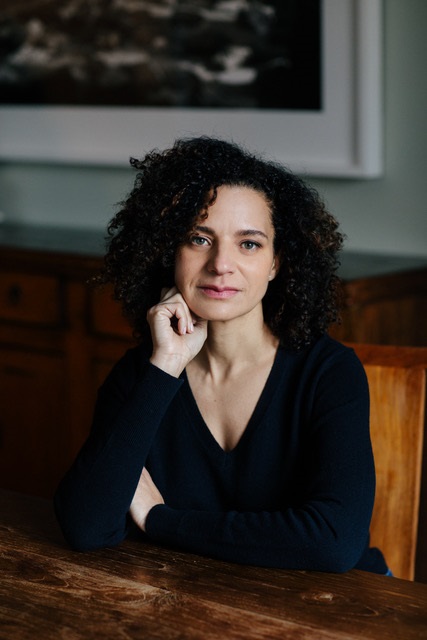 |
|
| photo: Sylvie Rosokoff | |
Asale Angel-Ajani is the author of a nonfiction book, Strange Trade, about drug traffickers imprisoned in Italy, and is a professor at the City College of New York (CUNY) where she serves as director of the Women's and Gender Studies Program. Her first novel, A Country You Can Leave (MCD/Farrar, Straus and Giroux, $27), follows the turbulent relationship of a biracial Black teen and her ferocious Russian mother, struggling to survive in the California desert. Angel-Ajani lives, writes and works in New York City.
Handsell readers your book in 25 words or less:
A Country You Can Leave is about a mother--a Russian immigrant--and her biracial Black daughter living on the edge of society, trying to find love and acceptance.
On your nightstand now:
I can no longer keep books on my nightstand. It was too much pressure. Really. The books on my nightstand became like a chorus of nagging aunties whenever I added a new friend to the pile, leaving my old friends unfinished. So I now carry my books around with me everywhere. I have three with me now.
Wanda Coleman's The Riot Inside Me is a collection of essays and some poetry, and I am being transported back in time reading about her perspective as a Black woman in California in the 1970s. She has some very pointed writing about success and being on the margins of the Black literati of the '70s and '80s especially.
The Hour of the Star by Clarice Lispector is a gorgeous slim novel that will likely make my all-time greatest list. For me, it's a writer's novel and completely untethered to the demands of anything outside of the story. It's not as free form as some of her other work, but it feels more visceral. I find myself reading and rereading lines and saying, "Damn" out loud nearly every time.
I am also reading the reprint of Claudia Tate's Black Women Writers at Work, a collection of in-depth and smart interviews with Black women writers like Toni Cade Bambara, Alexis De Veaux and Gayl Jones, among others. Since I am writing another book right now, I like to read this when I take a break. Sometimes the interviews are like eavesdropping on a conversation happening at the kitchen table, other times the interviews are master classes in the role of the novel in Black liberation movements.
Favorite book when you were a child:
My mother was an enormous reader, so I was a kid who grew up in the library. Of course, inevitably, we would accumulate too many late fees, so we would buy books from yard or garage sales. I bought my first book in a series--the whole set--for 25 cents at the Rose Bowl Swap Meet. It was The Adventures of the Great Brain by John Dennis Fitzgerald. I loved that this kid, Tom, was always scheming and dreaming up some plan to make money or get something for free but he was kind, too. I was really into it. I didn't know it at the time, but the book probably spoke to me because though demographically, I was not a young white settler boy living in rural Utah during the mid 1800s, the book dealt with being a minority and having to confront injustice in a very closed community.
Your top five authors:
James Baldwin, Anna Akhmatova, Gayl Jones, Louise Erdrich, Toni Morrison. This is a rotating list, of course.
Book you've faked reading:
I'm a public reader. Subway. Buses. Airplanes. Restaurants. I am not ashamed to admit that I have faked reading many a book with complicated or otherwise seductive titles, it's kind of a birthright, given my graduate degrees. Without question I have faked reading anything by Jean Baudrillard, and Proust's In Search of Lost Time. I've also been thumbing my way through the 700 pages of Being and Nothingness by Jean-Paul Sartre for a couple of decades.
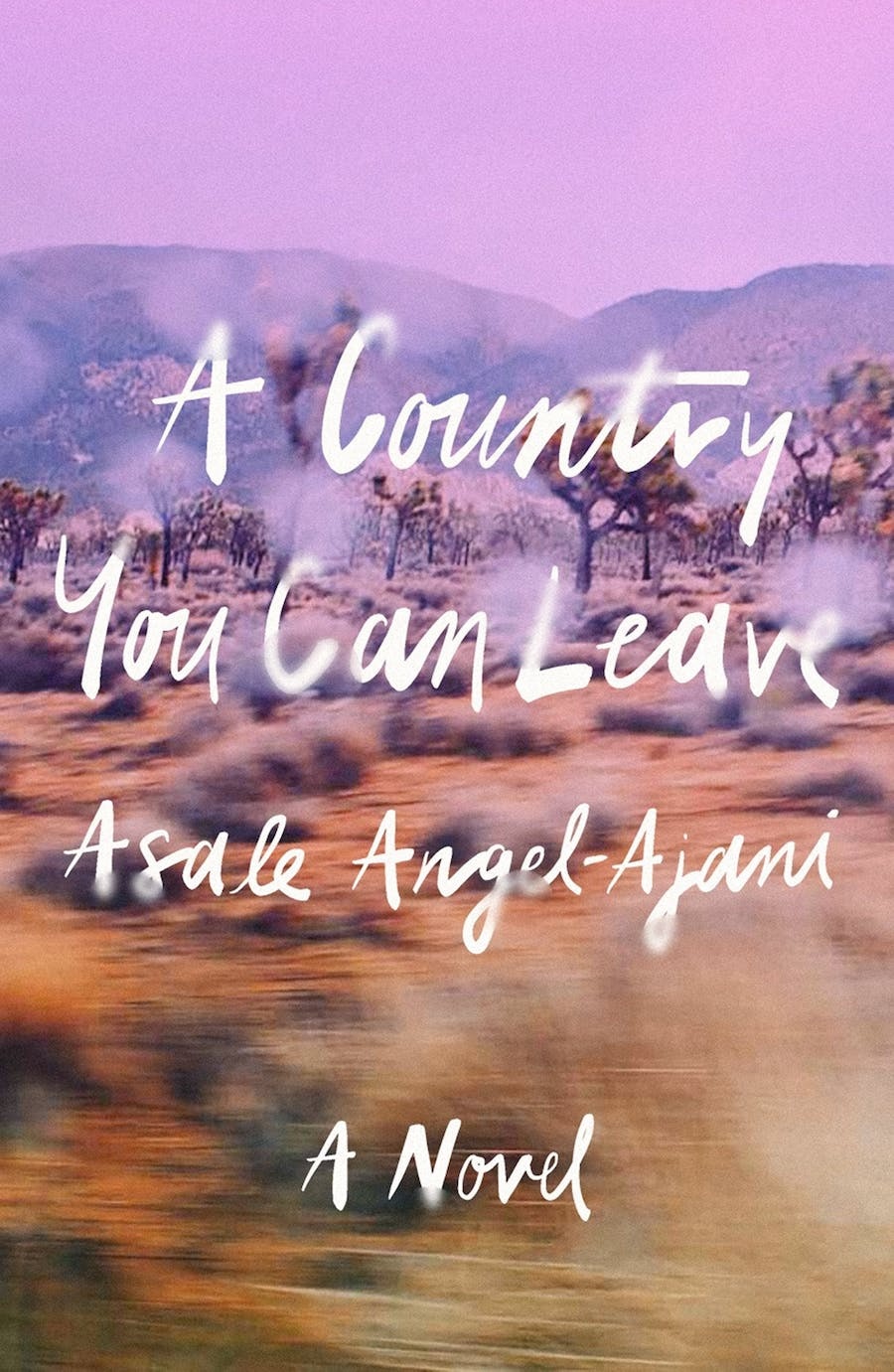 Book you're an evangelist for:
Book you're an evangelist for:
I have two books that I swoon and cry over to anyone who will listen. The first is Loukoum: The "Little Prince" of Belleville by Calixthe Beyala, translated by Marjolijn de Jager. It's a story about a seven-year-old Malian boy living in a Paris banlieue with his father and his two wives. It's a slim book, beautifully written, about class, race and male privilege in an immigrant community.
The second book is The Last Report on the Miracles at Little No Horse by Louise Erdrich. It is the perfect kind of book. It's gripping and original and tinged with a bit of mystery and a bit of a love story.
Book you've bought for the cover:
Too many books were bought for the cover. See my nightstand.
But also, many of the books I bought because they looked beautiful also thwart the negative connotation about "buying books" based on the cover. A book I bought based on a beautiful cover that was also very good and totally engrossing was Xochitl Gonzalez's novel Olga Dies Dreaming.
Book you hid from your parents:
I think I hid a lot of books from my mother, mostly, because any new book I got, my mother read first. She said it was because she wanted to see if they were appropriate, but I think it was because my mother would just tear through books when she wasn't working. She was always looking for something new to read. So, mostly, I hid books so that I could have the pleasure of reading them first. There were a few books that she censored though--Deenie by Judy Blume, another flea market find, and some book that I found in the literal gutter outside of my elementary school. I can't remember the title and that is likely because my twin sister and I (upon seeing how graphic and smutty the book was) decided to make a book jacket for it out of construction paper. We thought we weren't being obvious at all.
Book that changed your life:
I was given a seventh grade reading assignment and we had to pick a book off a long list to read and write about. I brought the list to my mother because she had huge stacks of books around the house, mostly from the bargain bins and yard sales, and a few (strategically) never returned books from the local library. My mother pointed to the list, saying she had a copy of Wuthering Heights in her room. She even let me go in to get it. This was a huge deal. My mother's room was off limits. I found the book, started reading it and was bored. Then I saw a Black woman on the cover of a book. I picked it up and began reading I Know Why the Caged Bird Sings by Maya Angelou. Even now, when I think about that book, I get emotional. The clearest memory of my life was the day I found that book. It was the first time I felt a small piece of understanding myself. Up to that point, I had not read anything that, though different, resembled my upbringing as a Black girl in rural California.
Favorite line from a book:
"Who hasn't ever wondered: am I a monster or is this what it means to be a person?" --from The Hour of the Star by Clarice Lispector
"Ci sono notti/ che non/ accadono mai." --Alda Merini, Selected Poems. [There are nights that never happen]
Five books you'll never part with:
Eva's Man by Gayl Jones
In the Vortex of the Cyclone, Selected Poems by Excilia Saldaña, translated by Flora González Mandri and Rosamond Rosenmeier
The Bone People by Keri Hulme
The True Confessions of an Albino Terrorist by Breyten Breytenbach
The Master and Margarita by Mikhail Bulgakov
Book you most want to read again for the first time:
It's hard to choose one book, but maybe Their Eyes Were Watching God by Zora Neale Hurston or Sula by Toni Morrison.
Book Candy
Book Candy
"Telling our stories, shaping our world: books to celebrate women storytellers," recommended by the New York Public Library.
---
"The legend of the giant keyboard that fulfills your wishes if you press 'Enter.' " (via Cultura Colectiva)
---
"Michelangelo's illustrated grocery list," courtesy of Open Culture.
---
"Readers burrow into a bookworm haven in Kurkku Fields' Underground Library" in Kisarazu City, Japan, Colossal noted.
The Curator
by Owen King
Owen King takes readers into an impeccably crafted, wildly imaginative world in The Curator, as a young woman tries to find out what happened to her long-dead brother while the city in which she lives crumbles around her.
The unnamed city is known for its "essential unmappability," nicknamed the Fairest and ruled for centuries by "handsome, heavy-browed monarchs." It is dotted with luxury hotels, traces of pagan rites, secret societies and pickpockets, and split down the middle by a dank, gray-water river known as the Fair. King (Double Feature) succeeds in making this setting feel entirely strange and also eminently knowable--a hallmark that carries throughout nearly every aspect of The Curator, at once fantastical and yet grounded in a too-familiar reality of corrosive greed and power grabs. These things come to a head in the opening pages of King's novel, as the Fairest has just staged a revolution and is working to create a Provisional Government, to be led by an unlikely trio: a playwright, a once-wealthy student and a dockman. "They had done it, the whole bunch of them, literate and illiterate alike: thrown the brakes on the machine and brought it to a halt before it could swallow up any more lives. They'd taken back the nation's wealth for the people who made it."
Amidst the settling dust of the rebellion, Dora ("D") yearns to finally discover what happened to her long-dead brother, who once worked for the Society of Psykical Research. Before his untimely death, D asked her brother where he went during the daytime, only to be told, "I made friends with one interesting person, one thing led to another, and now I'm part of a whole set of interesting people, and we're going to save the world. I hope you'll want to join us eventually." Somewhat unwittingly, that's exactly what D does in her search for answers. Finding the Society's building reduced to rubble, she contrives to become curator of the National Museum of the Worker in the building next door, spending weeks carefully reconstructing the wax figurines in their employment habitats and picturing in her mind the rooms in which each figure lives, just as she does for each new person she meets. When a new neighbor moves in on the other side and her nights become punctuated by the screams of torture victims, the vision of the rebellious city and its new government begins to crack as D is brought further and further into schemes for power, money and everlasting life.
Because, despite the apparent success of the revolution, something in the city is off: "[T]here was a sense of something furtive and sly and marginal pervading everything, both inside and outside the walls of the museum." That sense leaks out across every page of The Curator, as what D--and the reader--believes to be true is slowly revealed to be a lie. Or, at the very least, an incomplete representation of the truth. Rumors abound: a Morgue Ship sailing across solid land, collecting the souls of murdered folk across the city; holy cats scheming; pickpockets and cutpurses leaping into the mayhem to make a penny or two; a stalled army front far away on the road into the city. As the cast of characters with whom D interacts becomes an increasingly complex web of interconnected people (it turns out six degrees of separation applies even in King's fantastical setting), the slow untangling of each rumor and how each person is connected to it is as compelling as D's own story.
That's the true magic of The Curator: watching King weave a story that is at once epic in scope--so many characters! Side plots galore! Romance and intrigue! Magic and gore and torture and lore!--and entirely focused on one woman: a daughter turned orphan turned maid turned accidental revolutionary turned curator of a national museum turned city's saving grace. The Curator is ultimately as difficult to categorize as D is, weaving together the real and the fantastical, full of curiosities and wonders, violence and beauty, and incredibly nuanced and layered characters that feel real. It's an absolute riot of a read, requiring a bit of patience as readers learn alongside D what to believe and whom to trust, what is real and what is fabricated--and whether that even matters in the end. With dark humor and a keen eye for detail, King invites readers into a genre-defying narrative that asks readers to imagine what might be and what could be, as a woman stands between two worlds of her own, asking the same. --Kerry McHugh
A Wild Victorian Tale of Supernatural Conspiracy
An Interview With Owen King
 |
|
| (photo: Anne Raftopoulos) | |
Owen King is the author of Double Feature and We're All in This Together, and co-author, with his father, Stephen King, of the horror novel Sleeping Beauties. His writing has also appeared in various magazines and journals, including a short story in Lady Churchill's Rosebud Wristlet that inspired his third solo book, The Curator (Scribner, March 7, 2023), a fantastical tale of a city on the brink of revolution and a woman making her way between worlds. King lives in upstate New York with his wife, novelist Kelly Braffet, and their cats, described below.
You've spoken before about your growth as a writer--and editor of your own work--over time. Did the process for The Curator feel different from your previous books?
The process of writing The Curator was a little different initially, because it was based on a short story called "The Curator" that I published a few years ago in the wonderful magazine Lady Churchill's Rosebud Wristlet. The story was its own, fully realized piece, but it was tightly contained; there were all these shadowy implications in the background, and I could see the shape of a bigger, wilder narrative that I wanted to tell. I also just really loved the main character, D, and the way she handled herself, her bravery and her secrets.
It's hard not to love D! What was it like to develop the short story into a full-length novel?
Once I committed myself to an attempt to tell that bigger, wilder narrative, it did take a little while for the novel to sort of absorb the story and move beyond it. The book is based on the short story, but I want to add that, ultimately, they only share a few elements, and even the elements they do share are often altered in significant ways.
The "bigger, wilder narrative" is just that--big and wild, fantastical and horrific and marvelous all at once. With so much wildness, not just in the imagined city against which the novel is set but also in the storyline itself, how do you describe this story to folks who ask what you're working on?
It's a challenge! That said, D is at the heart of the novel, and her narrative is the book's mainline, so probably the simplest way to describe The Curator is as the story of a domestic servant in a familiar but unnamed Victorian city who discovers a supernatural conspiracy.
Noting that your past works have been widely described as comical and The Curator, while it has moments of a biting kind of humor, is quite dark--what, if anything, felt different going into this story idea?
The fantastical elements of The Curator are front and center, as is the quasi-Victorian milieu; I'm not sure I've ever written anything that's so much of a "yarn." At the same time, I do hope that readers feel like the characters are "real," that their hardships and their desires and their senses of humor ring true. In that sense, The Curator is like any other fiction: its transportive pleasures depend on how compelling the characters are to begin with.
Fiction has that unique power to transport, as you mentioned, while also inviting new ways of thinking about our world and our lives within it. The Curator poses some big questions about power, voice, work and storytelling. Were there ideas or curiosities you hoped to inspire in D's story?
The world D inhabits doesn't think much of her--in fact, it often doesn't think of her at all. She's consistently underestimated and overlooked. There's so much to D, these great strengths and sorrows, and I hope readers respond to her point of view, and root for her, and feel like the narrative does her justice.
There are so many layers built into the world of The Curator and the city that you describe as unmappable... did you map it in any way in your head as part of the writing?
The city is dense and sprawling, a combination of late 19th-century London and late 19th-century New York, but most of the action takes place at a few key locations, so I had a concrete plan for where those important spots were in relation to each other, and that informed my mental map.
There's a fairly epic scope to the cast of this novel: Did you have a favorite to write and/or a favorite because you'd want to hang out with them?
D is absolutely my favorite character to write, probably ever. Her point of view is a pleasure to adopt: I greatly enjoy seeing the way she sees, the clarity of her observations, the specific tilt of her imagination.
Most of the characters in the book are a handful! There are not many I would like to hang out with, although they have their charms. There's an important character named Ike, a teenage thief who becomes friends with D, who would be fun to spend an afternoon with, although at some point we'd probably end up running from constables. There's also an animal character, the mascot of a luxury hotel, a cat named Talmadge XVII, who plays a crucial role, and I'd like to meet her. She'd be indifferent to meeting me, however.
Noting the ways you've woven cats into the narrative, I'm curious: Do you have a cat? Are you a cat person? A dog person? (Must we choose?)
My family has two tabby cats, Barney and Frankie, who are not very alike, but get along beautifully. Barney's a gentle older fellow, and Frankie's kind of a wild card. They enrich our lives a great deal. I love their serenity, and I love their purpose, the intense way that they do every single thing. I've probably had, oh, a half-dozen cats in my life, and they're all special to me.
I do love dogs, as well, but since we always have a cat, it never seems quite right to bring a canine home. --Kerry McHugh
Rediscover
Rediscover: Ian Falconer
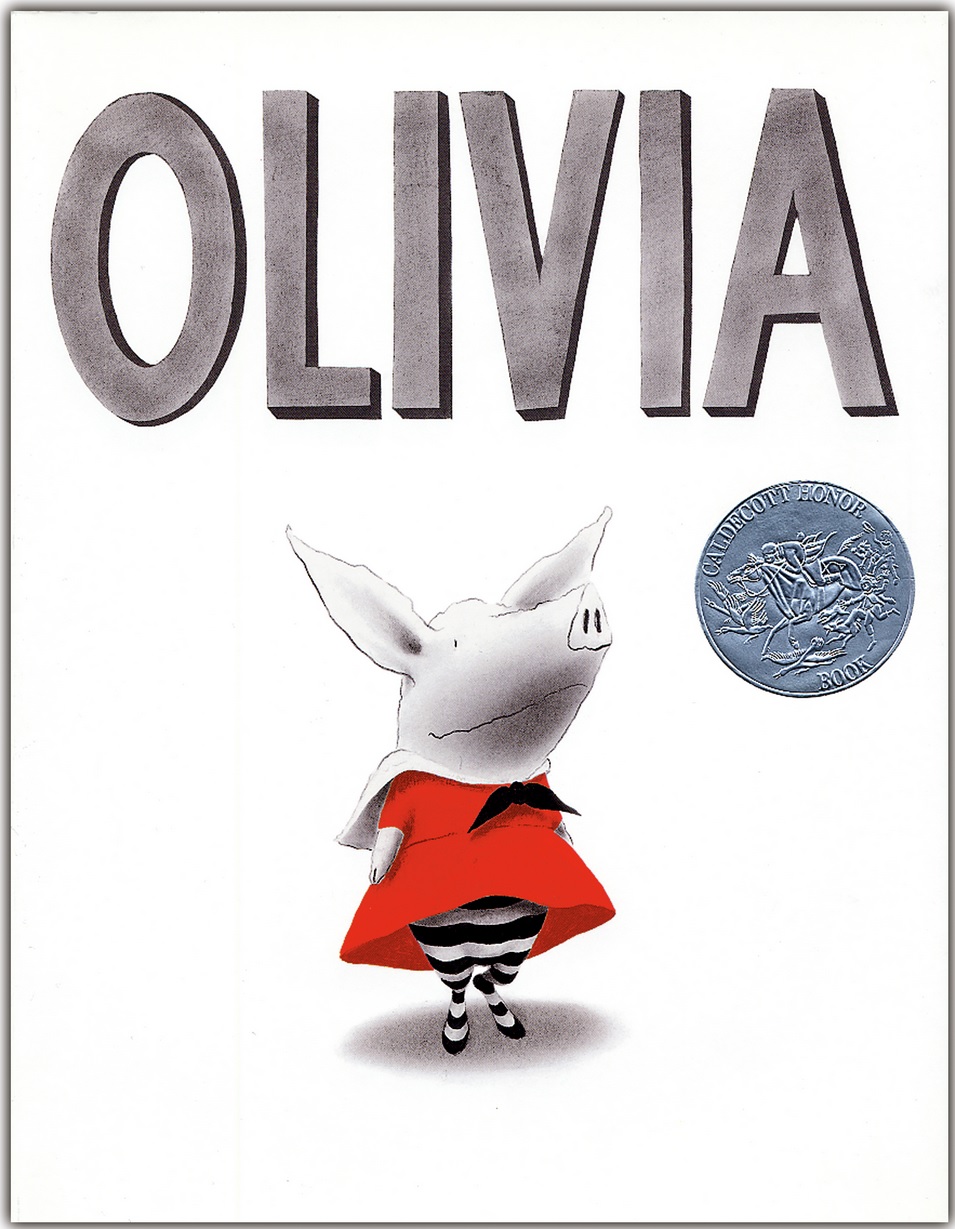 Children's book author and illustrator Ian Falconer, whose beloved Olivia book series has been translated into many languages and adapted into an animated TV series, died March 7 at age 63, NPR reported. Initially created as a Christmas gift in 1996 for his then three-year-old niece Olivia, the first Olivia book was published in 2000. It has sold more than 10 million copies and won numerous awards. He went on to illustrate and write seven sequels, culminating with Olivia the Spy in 2017.
Children's book author and illustrator Ian Falconer, whose beloved Olivia book series has been translated into many languages and adapted into an animated TV series, died March 7 at age 63, NPR reported. Initially created as a Christmas gift in 1996 for his then three-year-old niece Olivia, the first Olivia book was published in 2000. It has sold more than 10 million copies and won numerous awards. He went on to illustrate and write seven sequels, culminating with Olivia the Spy in 2017.
Falconer began illustrating covers for the New Yorker in 1996, producing 30 magazine covers over his career. NPR noted that "it was this work that first caught the eye of Anne Schwartz, then a children's book publisher at Simon & Schuster. In an interview with NPR, Schwartz said she planned to commission Falconer to illustrate another author's book project, but he was more interested in showing her what was then the 100-page draft of Olivia."
"You could tell immediately that this was something really, really special," she said. "I thought to myself, this is unlike anything I've ever seen before. I've just really gotten lucky here."
Falconer studied art history at New York University before focusing on painting at the Parsons School of Design and the Otis Art Institute in Los Angeles. "After incubating his talent as a theater designer with David Hockney, assisting the renowned artist with sets and costumes for Los Angeles Opera productions in the late 1980s and early 1990s, Falconer went on to create set and/or costume designs for top-tier companies around the world, including Théâtre du Châtelet in Paris, New York City Ballet and The Royal Opera," NPR noted.
He continued to seek inspiration for his books from family members, including Two Dogs (2022), about the adventures of a pair of dachshunds, which was inspired by his sister's children. The Olivia series is available from Atheneum Books for Young Readers.
| Advertisement Meet belle bear! |


